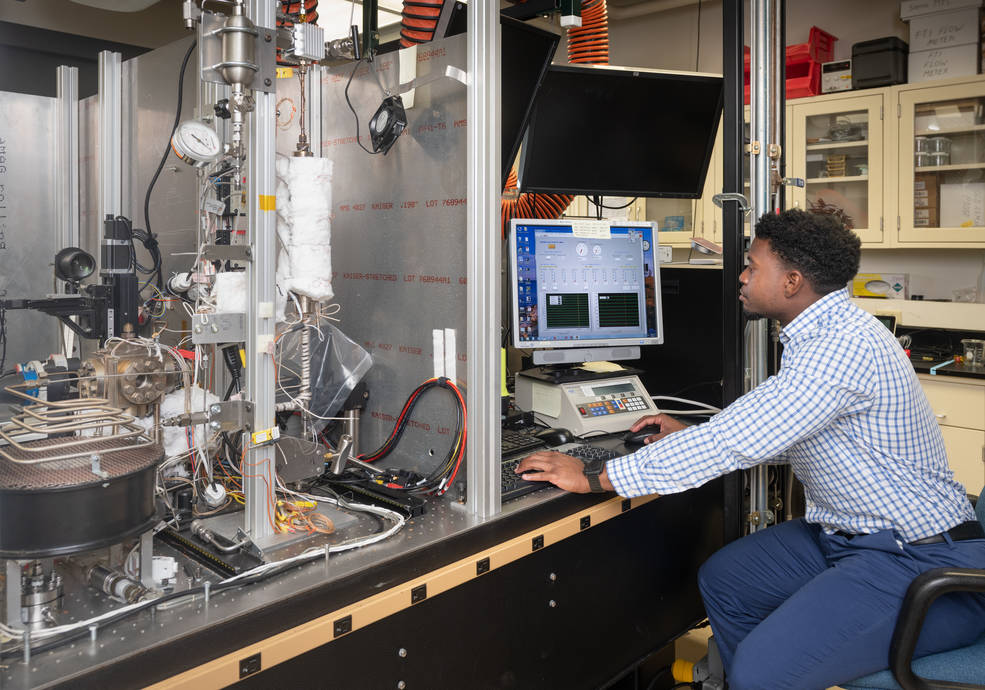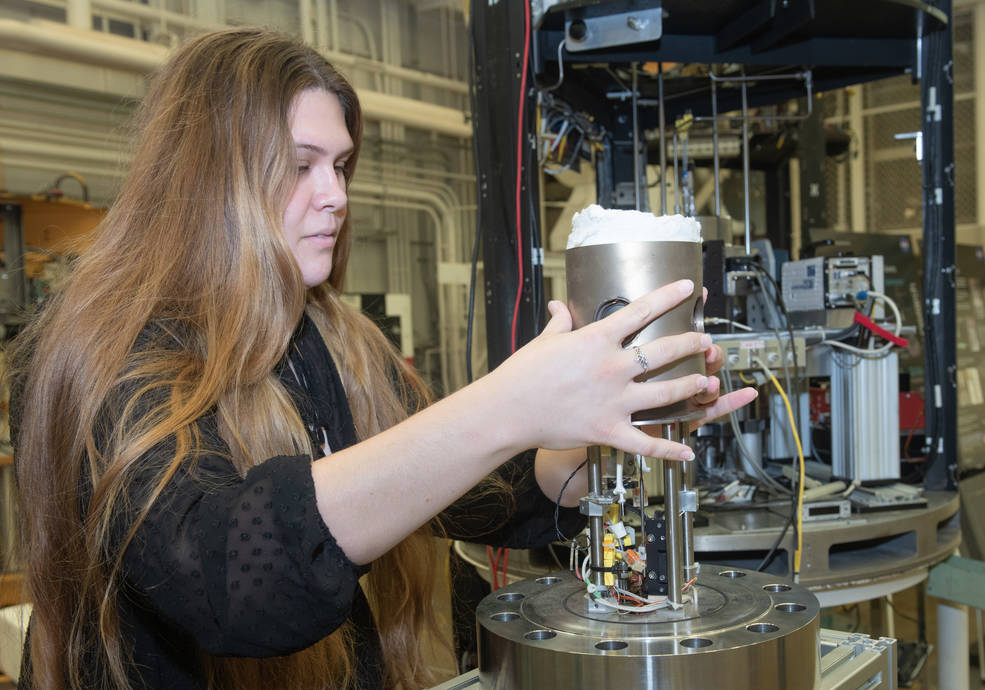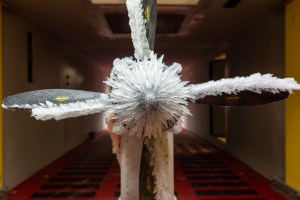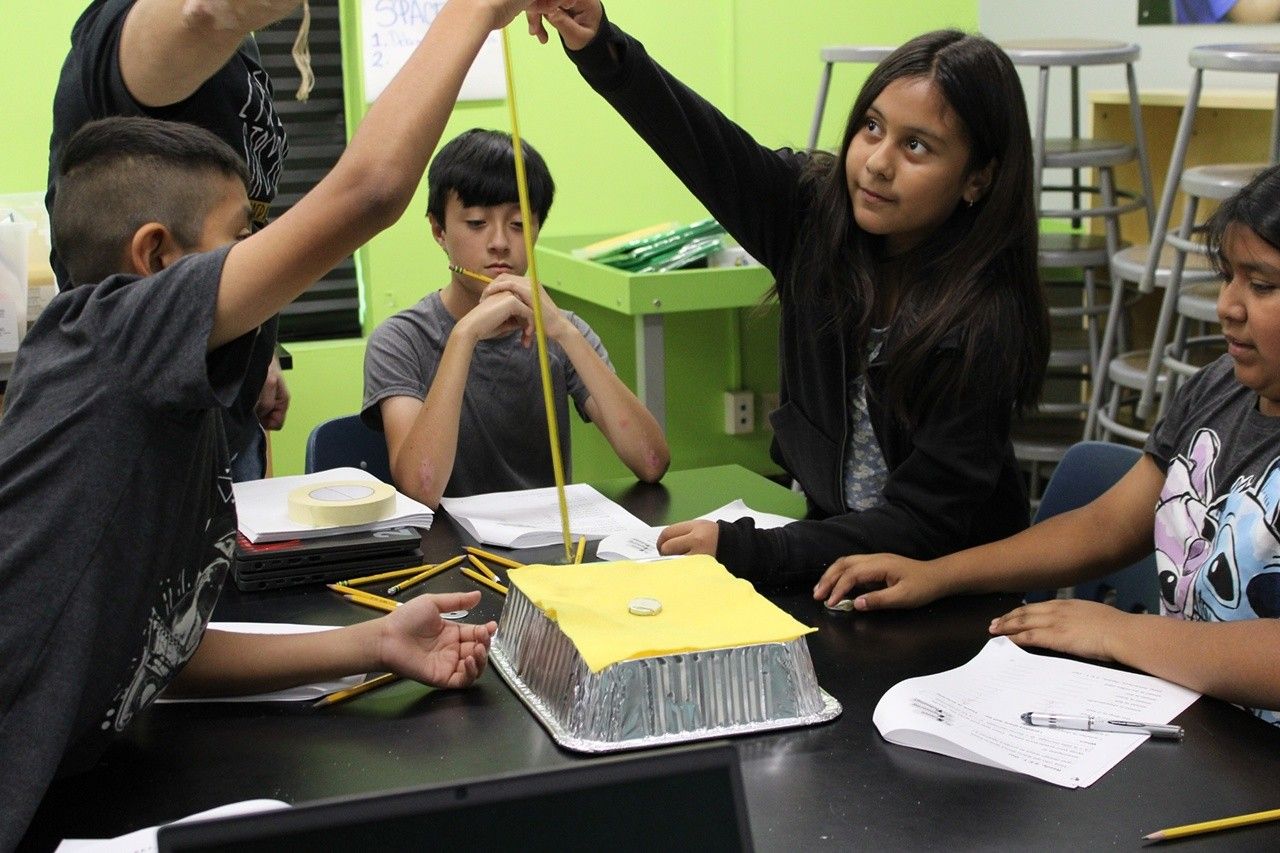Through NASA’s MIRO (Minority University Research and Education Project’s Institutional Research Opportunity) activity, two graduate students are about to launch careers in aerospace.
Mercedes Johnson and Caleb Riggins are completing master’s degrees in mechanical engineering from PVAMU (Prairie View A&M University) in Prairie View, Texas supported by the NASA-funded Center for High Pressure Combustion. The NASA-funded research program conducts research on liquid fuel combustion in microgravity at elevated pressures.
To allow hands-on learning, PVAMU works closely with Glenn Research Center in Cleveland, Ohio for interns to use various testing facilities for their research. Mercedes Johnson’s research area focuses on autoignition of fuels containing n-alkaline and alcohol, while Riggins’ research focuses on water oxidation testing on wastewater. Both areas of research have direct connections to future space missions.
Both interns already have professional experience as they recently presented at a technical session at the American Society for Gravitational and Space Research conference. After completing their internships, Johnson and Riggins will begin jobs with Boeing.
Dr. Michael Hicks, senior research scientist with Glenn Research Center commented, “The collaboration with PVAMU has truly been wonderful. The caliber of students we received, both in academic capabilities and in their eagerness to learn as much as they could squeeze into their internship, was a testament to the training they received at PVAMU and as well as to the overarching goals of the MIRO program. The MIRO program benefits not only the students from traditionally underrepresented universities but benefits NASA, as well, by extending their talent pool well beyond the heavily funded research institutes.”
PVAMU is a Historically Black College and University and is the second oldest university in Texas. PVAMU was recently awarded the R2 Carnegie classification as a research university of distinction.
Funding from the MIRO award program will enable professor Ziaul Huque, who has a doctorate in mechanical engineering and is the director of the Center for High-Pressure Combustion in Microgravity; and associate professor Yuhao Xu, who has a doctorate in mechanical engineering, to begin experimental research at PVAMU using its drop tower facility to study the effects of microgravity on physical phenomena. Only a handful of institutions have such a facility on campus; PVAMU’s will establish the drop tower experiment laboratory and a computational facility within the mechanical engineering department.
MIRO is managed through the NASA Armstrong Flight Research Center’s Office of STEM Engagement in California, which awards cooperative agreements to universities around the nation to perform research and education. PVAMU was awarded MIRO funding in 2019 and has supported 17 undergraduate and 14 graduate students pursuing degrees.
All MIRO awards are provided to minority-serving institutions to promote research capacity, expand aerospace research, increase workforce diversity, and strengthen STEM skills. There are currently 15 active MIRO awardees across 12 different U.S. states and territories.
Lisa Wininger
Education Coordinator
Armstrong Flight Research Center



































